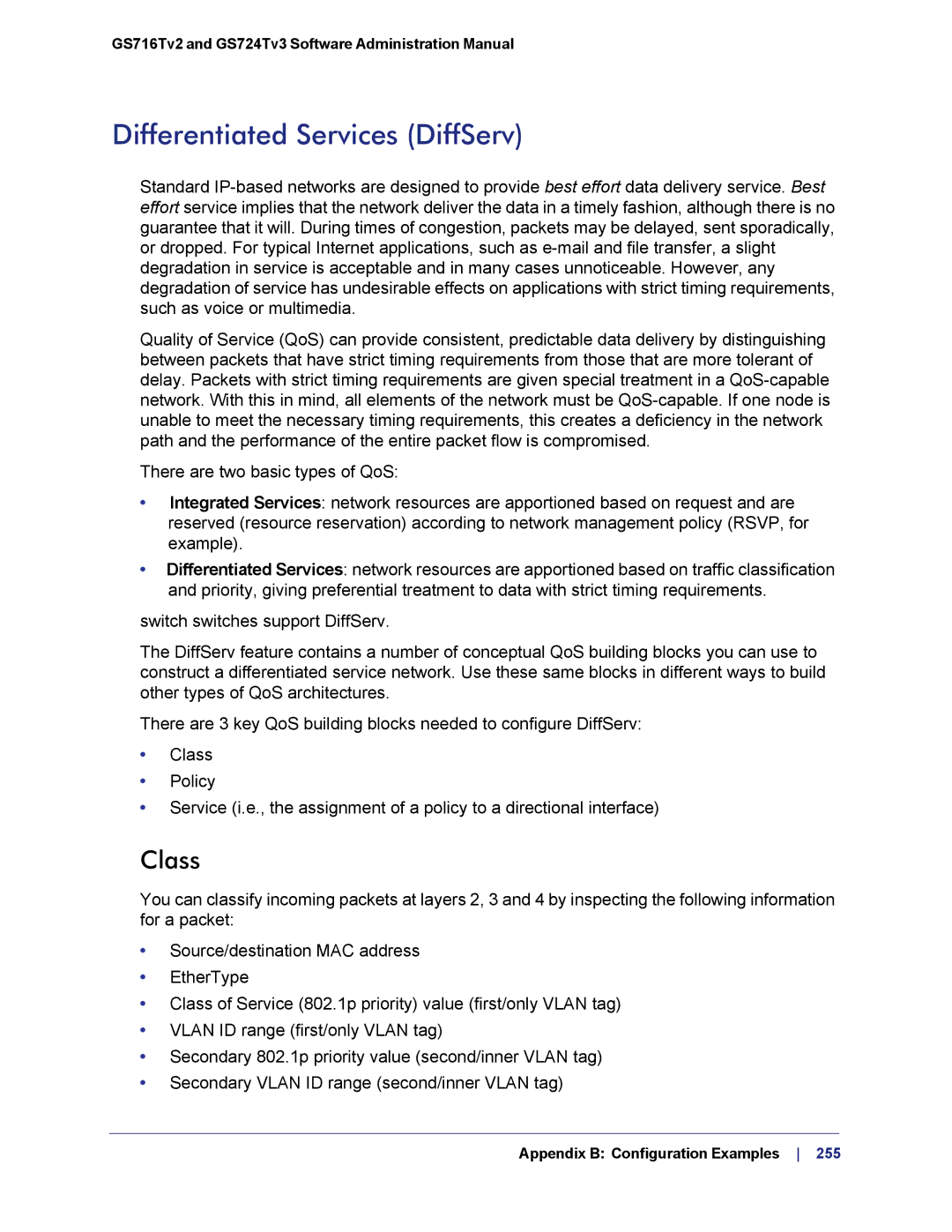GS716Tv2 and GS724Tv3 Software Administration Manual
Differentiated Services (DiffServ)
Standard
Quality of Service (QoS) can provide consistent, predictable data delivery by distinguishing between packets that have strict timing requirements from those that are more tolerant of delay. Packets with strict timing requirements are given special treatment in a
There are two basic types of QoS:
•Integrated Services: network resources are apportioned based on request and are reserved (resource reservation) according to network management policy (RSVP, for example).
•Differentiated Services: network resources are apportioned based on traffic classification and priority, giving preferential treatment to data with strict timing requirements.
switch switches support DiffServ.
The DiffServ feature contains a number of conceptual QoS building blocks you can use to construct a differentiated service network. Use these same blocks in different ways to build other types of QoS architectures.
There are 3 key QoS building blocks needed to configure DiffServ:
•Class
•Policy
•Service (i.e., the assignment of a policy to a directional interface)
Class
You can classify incoming packets at layers 2, 3 and 4 by inspecting the following information for a packet:
•Source/destination MAC address
•EtherType
•Class of Service (802.1p priority) value (first/only VLAN tag)
•VLAN ID range (first/only VLAN tag)
•Secondary 802.1p priority value (second/inner VLAN tag)
•Secondary VLAN ID range (second/inner VLAN tag)
Appendix B: Configuration Examples 255
